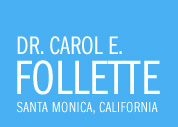Ever since the appearance of the first electric toothbrush in 1927, the debate has raged: electric or manual? If you haven’t yet visited our Santa Monica dentist office to hear our take on the pros and cons of each, this blog will serve as a useful primer.
Manual Toothbrush
Pros
Manual toothbrushes have certainly been around far longer than their electric counterparts, and despite their lack of fancy accoutrements, manual brushes are still quite effective for ensuring clean teeth, a bright smile, and a healthy mouth, and warding off oral maladies such as cavities and gingivitis.
Manual toothbrushes are easily the most affordable option, typically costing from $1 – $3. Manual brushes are always available too, possessing a ubiquitous nature that covers everything from grocery stores and gas stations, to dollar stores and pharmacies. Plus, you can use a manual toothbrush anywhere, anytime, without worrying about charging it.
Cons
Maybe the biggest drawback to using a manual toothbrush is one that became far more noticeable with the advent of the electric toothbrush: the risk of not brushing long enough when using a manual brush. When electric toothbrushes came around, their timers, blinking lights, etc. made it easy for people to brush for the right amount of time. This is just one of the things manual users have to deal with, usually by counting to one’s self, or setting a timer on their watch or phone.
Another con – albeit one that is more of a behavioral observation than a provable assertion – is that manual toothbrush users are more likely to brush too hard, which can hurt the gums and teeth. The idea is that an electric toothbrush is doing the work for the user, making it seem as though a manual brush needs a firmer hand. Of course, this isn’t the case. A manual toothbrush should be applied just as gently as an electric brush.
Electric Toothbrush
To be honest, there are many more advantages than disadvantages to using an electric toothbrush. The drawbacks are pretty obvious: cost and the need for a consistent charge. With this in mind, our Santa Monica dentists will focus on the pros, since there are several important ones you should know about.
Built-In timers:as mentioned in the previous section, these are a big help for everyone, especially kids, in the quest to develop good brushing habits.
Safe for gums: an electric toothbrush is very effective at promoting overall oral health, and despite its sound and speed it doesn’t hurt the gums or tooth enamel.
Less waste: when a manual toothbrush expires, the whole thing is discarded. But when an electric toothbrush is finished, you just need to replace the brush head – not the entire apparatus.
Better for people with limited mobility: since an electric toothbrush does most of the work with minimal physical input required, it’s a terrific option for those who suffer from arthritis and carpal tunnel. Plus, the ease-of-function is a boon to people with developmental disabilities.
Proven plaque removal: multiple studies confirm that electric toothbrushes trump manual brushes when it comes to removing plaque and preventing gum disease. In fact, one study showed that after three months of use, an electric toothbrush reduces plaque by 21% and gingivitis by 11%.
We Provide Brushing Tips and Much More
If you’re seeking an established, successful partner for Santa Monica dentistry, Dr. Carol E. Follette is the dentist for you. We use the latest dental tools and technologies to take care of your teeth, and we’ll recommend the right electric toothbrush so you can maintain top oral health at home.
